This time, I want to share a delicious dessert with a rich Southeast Asian flavor—the Cendol Sago Kuih (Cendol Flavor). This traditional sweet treat is crystal clear, delightfully chewy, and soft. With one bite, the freshness of natural Pandan and the rich aroma of gula melaka intertwine on your tongue. It requires little decoration, yet boasts natural colors and fragrances. Each mouthful is like a gentle tropical afternoon breeze—soothing and healing.
You can switch between Chinese or English 🔊 audio and 🔤 subtitles
~If you like our video, welcome to subscribe our YouTube Channel~
About This Dessert: The Charm of Sago Kuih
The Sago Kuih is a familiar traditional sweet treat in many Southeast Asian households, and a classic type of Malaysia Kuih.
Its beauty lies in its simplicity—relying only on a few natural ingredients: sago pearls, coconut milk, Pandan, and Gula Melaka (palm sugar). Without artificial coloring or flavorings, it achieves distinct layers and a rich texture. Each layer carries a different note—the warmth of Gula Melaka, the fresh scent of Pandan, and the smoothness of coconut milk. Layered together, they represent three flavors, and three moods.
Why is it called “Cendol Sago Kuih”? Analyzing the Southeast Asian Flavors
The reason this Cendol Sago Kuih is named Cendol is that it incorporates the three essential flavor elements of Cendol:
- Green: Derived from natural Pandan, which is the main color of the green rice flour jelly in Cendol.
- Brown: Comes from the rich Gula Melaka (palm sugar), the indispensable sweetener for Cendol.
- White: Originates from the smooth coconut milk, which gives the Kuih its creamy richness.
These three flavor elements come together to create a similar taste like Cendol, bringing you a full taste of Southeast Asia.
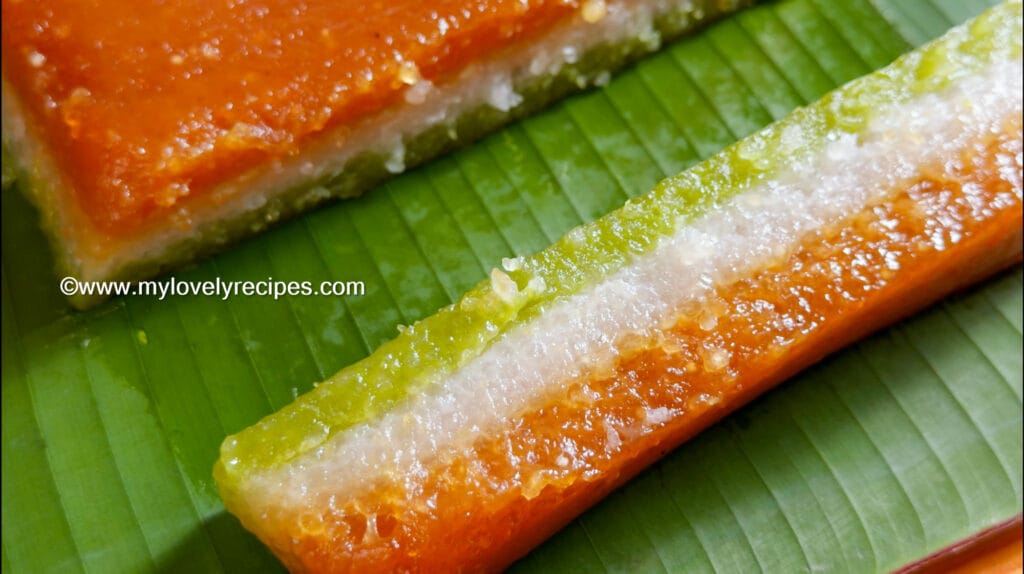
The Soul of Aroma: Secrets to Natural Pandan Juice and Rich Coconut Shreds
To achieve that natural, vibrant green color, the key is concentrated Pandan juice settled overnight.
When making this natural coloring, it is recommended to use tender Pandan leaves to avoid any bitterness in the final Kuih. After blending into a juice, let it sit in the refrigerator overnight. The next day, only collect the dark green layer at the bottom—that is the true “soul of Pandan.”
Coconut Shreds Tip: Steaming with Pandan Leaves for Richer Flavor
The coconut shreds used for coating the Kuih cannot be skipped! To ensure the coconut shreds are more fragrant and last longer, it’s recommended to steam them with a few Pandan leaves placed alongside. These snow-white coconut shreds, treated this way, carry a hint of sweet Pandan fragrance, making them the perfect partner for the Cendol Sago Kuih.
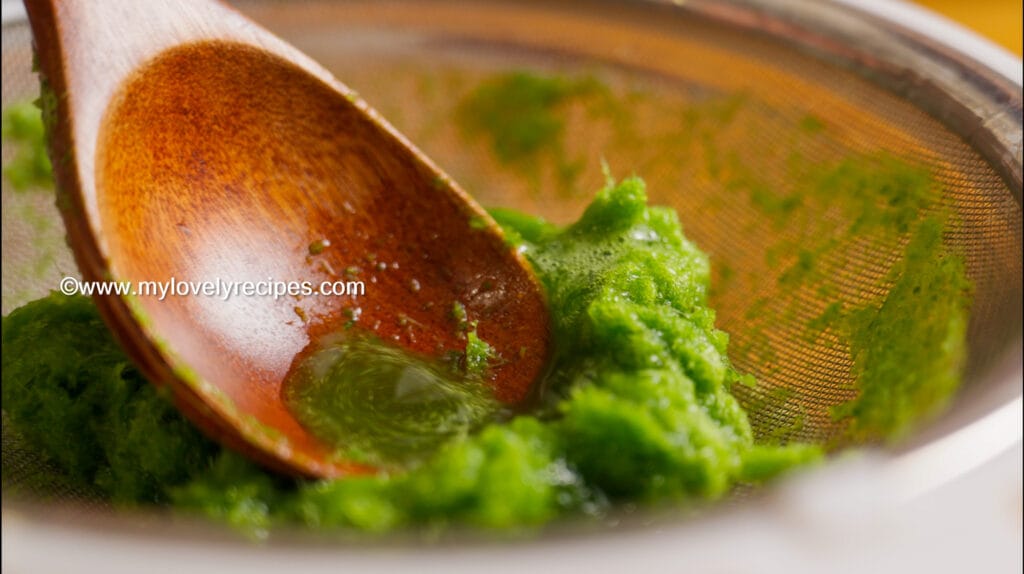
Detailed Steps: Layers of Tender Texture
Here are the key steps for making this chewy and soft Cendol Sago Kuih:
1. Preparation
- First, soak the sago pearls thoroughly until soft and set aside (this step is crucial for ensuring the sago is easier to be cooked).
- Mix the soaked sago pearls evenly with sugar, tapioca flour, and thick coconut milk.
2. Layering and Coloring
Divide the mixture evenly into three portions, representing the three flavors:
- White Layer: Add an appropriate amount of thick coconut milk, representing the richness of the milk.
- Brown Layer: Add melted Gula Melaka syrup, carrying the mellow flavor of palm sugar.
- Green Layer: Add the concentrated Pandan juice settled overnight, giving it the fresh Pandan fragrance.
3. Steaming and Setting
- Pour the layers into the mold one by one according to your preferred order (e.g., Gula Melaka brown, then coconut white, and finally Pandan green).
- Each layer needs to be steamed until set to ensure the Kuih has distinct layers. During the entire process, your kitchen will be filled with a light sweet aroma and the scent of banana leaves—very comforting.
4. Cooling and Enjoying
- Wait until completely cool before unmolding and slicing.
- Coat the sliced Cendol Sago Kuih with a layer of snow-white coconut shreds.
The soft, chewy texture is heartwarming just by looking at it. The moment you bite in, the sweetness of Pandan, the richness of Gula Melaka, and the creaminess of coconut milk spread in your mouth. Simple natural ingredients can bring a warmth to life—that is the charm of Southeast Asian traditional sweet treats.
You might also like another sago dessert recipe

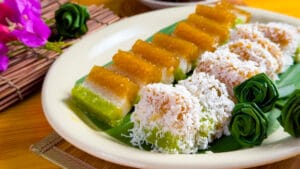
Cendol Sago Kuih
Please Click 1-5 Star to Rate This Recipe
Print Pin Comment & RateINGREDIENTS
- 200 g Sago
- 50 g Sugar
- 10 g Tapioca Flour
- 80 g Thick Coconut Milk
- A pinch of salt
- 20 g Water added to the coconut milk mixture
- 20 g Concentrated Pandan Juice added to the pandan mixture
Concentrated Pandan Juice
- 40 g Pandan Leaves
- 200 g Water
Coconut Syrup
- 50 g Palm Sugar
- 25 g Water
Freshly Grated Coconut
- 200 g Freshly Grated Coconut
- 1 Pandan Leaf
- A pinch of salt
INSTRUCTIONS
- Prepare concentrated pandan juice. Blend tender pandan leaves with water, filter, and refrigerate overnight to allow sedimentation. The next day, you can skim off the clear liquid on top with a spoon or use a syringe to extract the most concentrated portion, depending on your preference.

- Soak sago for 30 minutes.

- Cut pandan leaves into small pieces, add freshly grated coconut and a pinch of salt, and mix well. Steam over high heat for 5 minutes. Remove and let cool.

- Dissolve palm sugar with water and set aside.

- Prepare a large bowl, place a scale underneath, and pour in the drained soaked sago.

- Add sugar, tapioca flour, coconut milk, and a pinch of salt, paying attention to the total weight. Mix well.

- Divide the mixture into three equal portions.

- Add palm sugar syrup to one portion, concentrated pandan juice to another, and water to the third. Mix each portion thoroughly and set aside.

- First, pour the palm sugar mixture into a container and steam over high heat for 15 minutes. After steaming, pour in the coconut milk mixture and steam for another 15 minutes. Add the last portion and steam for 20 minutes, then turn off the heat and let it sit for 10 minutes.

- Once completely cooled, slice and coat with steamed grated coconut before enjoying.

INSTRUCTIONS VIDEO
NUTRITION

We are Penangites who love to COOK & EAT, so we are sharing the food we love with you. Know more about us…

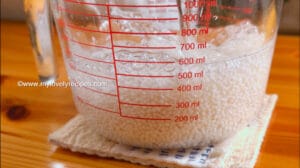
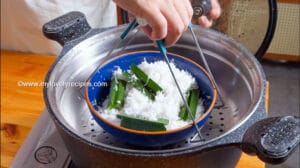
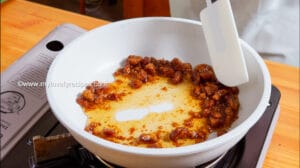
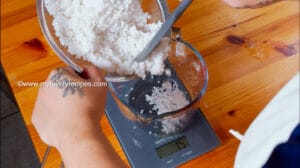

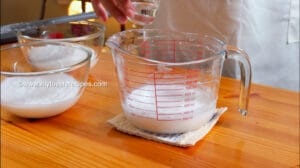
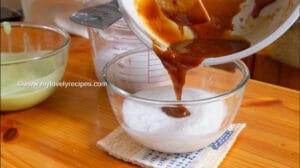
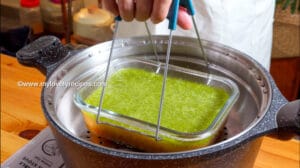
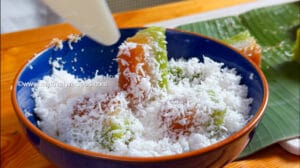
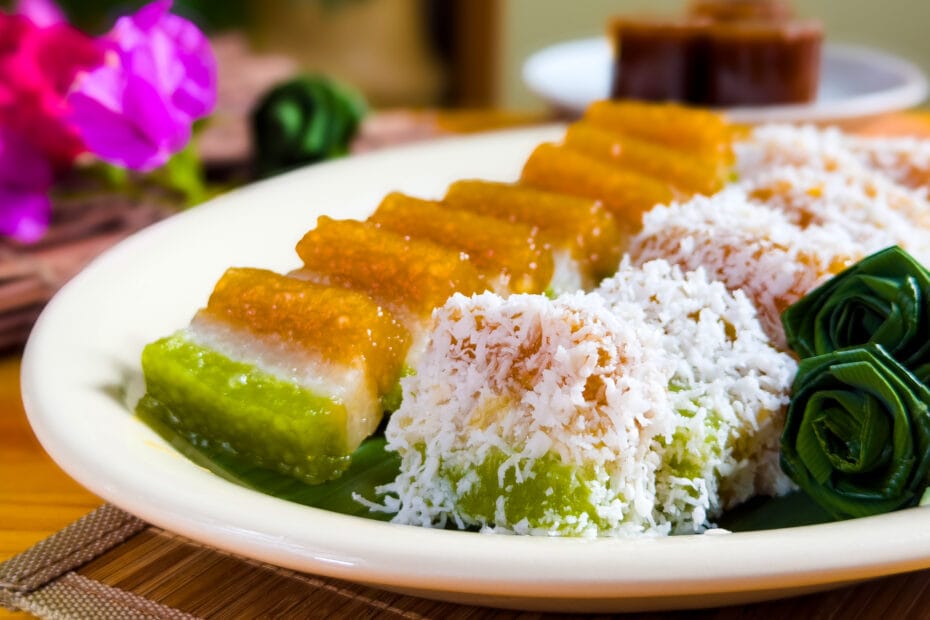
Welcome to comment and rate this recipe~